① 采访手记
去年,我有幸参加了斯坦尼斯拉夫教授为期三周的编剧工作坊。在这段紧凑而充实的时间里,教授深入讲解了剧情片中人物塑造方法、冲突设置技巧与主题表达策略。他还对我的毕业创作《空心病》给予了细致地指导,并就后续拍摄中可能遇到的问题提供了专业建议。今年,斯坦尼教授正式加入电影学院任教。值此之际,我对教授进行了专访,既想了解他初到上海的生活观察,也想探询他未来在上戏的教学规划,以及即将在中国开展的项目实践。(21级广播电视编导 杨雨芃)
问答
01
What was your first impression of the Shanghai Theatre Academy?
你对上海戏剧学院的第一印象是什么?
My first impression of the Shanghai Theatre Academy (STA) was overwhelmingly positive. The vibrant production environment of the city itself serves as an inspiring backdrop for the academy. The students I met were exceptionally motivated, prepared to the highest level, and eager to learn. The faculty here is extremely knowledgeable, and the educational infrastructure is top-notch, especially with the integration of cutting-edge VR/AR studios. STA’s commitment to both traditional cinema and technological innovation is evident in the way students engage with contemporary themes, including AI philosophy, which I find truly exciting.
我的第一印象非常积极。上海本身充满活力的创作环境为学院提供了天然的灵感土壤。这里的学生表现出强烈的学习动机,具备极高的专业素养,并且充满求知欲。教师团队拥有深厚的专业知识,教学设施处于顶尖水平,特别是整合了前沿的VR/AR工作室。学院对传统电影教育与技术创新的双重投入清晰可见,学生们对包括人工智能哲学在内的当代议题的积极参与尤其令我感到振奋。
02
Compared to your previous teaching experiences, do you find any differences in the creative thinking or learning approach of students at STA?
与你过去的教学经历相比,STA学生的创意思维或学习方法有何不同?
One of the main challenges I’ve encountered is that many of the students here are quite shy and not used to reading each other’s texts or engaging in open discussions about them. In the classroom, there seems to be a tendency to hold back and avoid giving or receiving feedback from peers, which can limit the creative process. One of the main reasons for this situation is the system of teaching in large groups. It can work well for the first and second years when students are learning foundational concepts. However, when it comes to developing individual scripts or treatments, it's crucial to shift to smaller groups of 6-8-10 students, allowing for better interaction and a more personalized approach to each student’s work.
It was also interesting to find out that the perception of cinema seems to remain strongly connected to the core concepts of cinematic movements from the 1950s, 60s, and 70s such as the French New Wave, the Soviet poetic films, the American “underground cinema”... The students here prefer to pose more questions than provide answers. Symbols, colors, and sound effects play a key role in their understanding of storytelling, often shifting the focus from the plot itself to the way the viewer perceives what is happening. They also love to use memories, diaries, dreams, ghosts, coincidental meetings & appearances of people, findings of objects…
最显著的差异在于课堂互动模式。许多学生存在羞怯倾向,不习惯互相审阅文本或开展开放式讨论。在课堂上,学生普遍表现出保留态度,避免给予或接受同伴反馈,这种情况可能限制创作潜力。这种状况部分源于大班教学模式——虽然适用于低年级基础教学阶段,但当进入个人剧本或剧本大纲创作时,必须转向6-8-10人的小班制,以便建立更好的互动机制,实现对每个学生作品的个性化指导。
另一个值得注意的现象是学生对电影的认知仍紧密关联1950-70年代电影运动的核心概念,例如法国新浪潮、苏联诗意电影、美国地下电影等。学生们更倾向于提出问题而非提供答案,在他们的叙事认知中,象征符号、色彩语言和声音效果占据关键地位,这种侧重往往将叙事焦点从情节本身转移到观众对事件的感知方式上。他们热衷于运用记忆碎片、日记载体、梦境元素、幽灵意象、人物偶遇与物品重现等叙事手段。
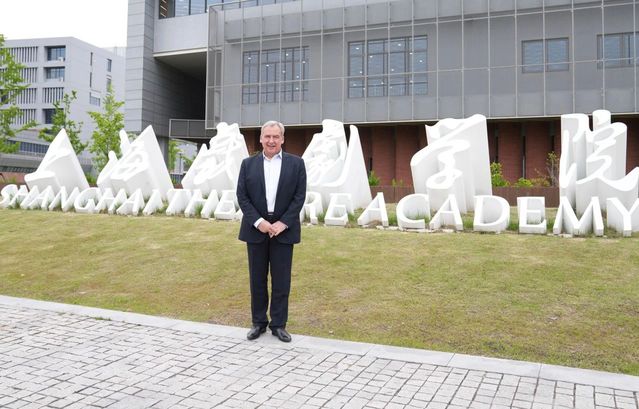
03
Have you encountered any interesting cultural differences while interacting with students? Any moments that stood out to you?
在与学生互动中遇到过哪些有趣的文化差异?是否有令你印象深刻的时刻?
Absolutely. One of the most fascinating aspects of my teaching here is seeing how cultural traditions influence the way students approach storytelling. For instance, one student wrote a script about a homeless person who takes refuge in a family’s burial room due to limited space in Shanghai. It was a beautiful reflection of how space and urban living impact personal narratives.
In another script, a man is tricked by his friend into investing in a business, losing everything. But instead of raising a scene or seeking revenge, he simply walks away — there’s no dramatic confrontation or legal pursuit.
Another story revolved around a son who hadn’t returned to his hometown in six years and had been lying to his parents about his success. When his father unexpectedly visits the city, the son’s deception is exposed but they don’t engage in a heated argument. Instead, after a long silence, the son calmly suggests a walk by the river. They start walking, then pick up speed, eventually running. The next day, the son sees his father off at the train station, exchanging only a few casual words, a brief hug, and then parting ways.
Yet another script focused on a "ruzhui" (son-in-law) who is not allowed to stay vigil by the death bed of his father-in-law with whom he has managed to create a strong bond. This story reveals not only the complexity of Chinese familial ties but also the broader social context of identity and gender roles in family life.
In Western cinema, all these situations would almost certainly escalate into a major conflict, where characters’ motivations and emotions would be laid bare through confrontation. However, in Chinese tradition, there’s often a more subtle, restrained approach to emotional expression and interpersonal drama. The lack of confrontation, the understated emotionality, and the space for silence are all part of what makes Chinese cinema uniquely engaging. It’s less about the conflict itself and more about the resolutions — or, in some cases, the lack of resolution, which leaves room for reflection and growth.
This cultural approach is something I find particularly intriguing as it offers a different way of thinking about human interaction and narrative structure. On the other hand, this is also one of the reasons why films made in this vein often struggle to connect with a global audience, which is accustomed to the classical three-act structure, intense passions, and explosive relationships.
最引人入胜的发现是文化传统对叙事方式的深刻影响。例如某个学生创作的剧本中,无家可归者因上海居住空间紧张,选择在某个家族的骨灰房暂住,这个设定精妙地反映了城市空间对个人叙事的塑造力。
另一个剧本描写了被朋友欺骗导致投资失败的男性角色,他失去全部财产后没有制造冲突场景或寻求报复,而是选择平静离开——故事中既没有戏剧化对抗也没有法律追索。
还有剧本围绕六年未归乡的儿子展开,他长期向父母虚构事业成功的谎言。当父亲突然到访城市戳穿骗局时,双方没有爆发激烈争吵,而是在漫长沉默后,儿子冷静提议去河边散步。他们初始缓步而行,逐渐加快步伐直至奔跑。次日儿子在火车站送别父亲时,仅交换了寥寥数语,短暂拥抱后各自离去。
另一个剧本聚焦于不被允许在岳父临终床前守灵的“入赘女婿”,这个角色与岳父建立了深厚情感纽带却因传统家庭角色受限。该故事不仅揭示了中国家庭关系的复杂性,更折射出家庭生活中的身份认同与性别角色等社会语境。
在西方电影中,上述所有情境几乎必然发展为激烈冲突,角色的动机与情感会通过直接对抗显性化。但在中国文化传统中,情感表达与人际戏剧往往采用更微妙、克制的处理方式。冲突的缺席、情绪的内敛化以及留白空间的存在,共同构成了中国电影独特的叙事魅力。这种叙事逻辑更关注化解过程——或者在某些情况下故意保留未解状态,从而为观者预留反思与成长的空间。这种文化特性提供了关于人类互动与叙事结构的差异化思维路径,同时也解释了为何此类作品有时难以被习惯经典三幕剧结构、激烈情感表达与爆发式关系处理的全球观众完全接纳。

04
What are your expectations for your students? What core skills or creative principles do you hope they will gain from your courses?
你对学生有哪些期待?你希望他们从课程中掌握哪些核心技能或创作原则?
The students at STA are already well-versed in creating compelling protagonist characters but one thing I emphasize in my courses is the importance of also developing solid conflict and strong antagonists. Learning how to create antagonists who truly challenge their protagonists will lead to a richer, more profound character growth and personal change, whether through growth or decay, for both parties. Ultimately, I want them to learn how to craft characters whose decisions, actions, and internal conflicts drive the plot. This is an area where I find many students may benefit from deeper exploration. Other key skills I hope to instill are the ability to use symbolism effectively and balance traditional storytelling with modern techniques to bridge the past and future of cinema. I also want them to develop a strong narrative instinct for genre structures.
Aristotle’s principles, particularly his ideas on catharsis and the unities of time, place, and action, guide much of how I help students craft not just compelling narratives but also emotionally resonant ones. Hegel’s exploration of dialectical tension between opposing forces informs the way I teach students to develop dynamic conflict that evolves and transforms the characters throughout the story. Furthermore, Christopher Vogler's “Hero’s Journey” framework is invaluable when discussing character arcs, while Jungian archetypes provide essential tools for understanding the deep, often unconscious drives of characters. Additionally, Lajos Egri's emphasis on the relationship between premise, character, and conflict helps students understand that strong storytelling comes from well-defined goals, obstacles, and a clear internal and external struggle.
I also pay attention to the writings of Abraham Maslow, Lawrence Kohlberg, Paul Lawrence & Nathan Nohria, and Paul Eckmann among many others, who all view human development as a progressive journey, whether it’s through psychological growth (Maslow), moral reasoning (Kohlberg), basic human drives (Lawrence & Nohria), or emotional intelligence (Eckmann). They each contribute to a deeper understanding of the complex ways in which needs, drives, emotions, and morality interact to shape individual and social behavior.
STA学生已精于塑造富有吸引力的主角,但我的教学重点在于强化冲突构建与反派塑造能力。学会创造真正能够挑战主人公的反派角色,将推动更深刻的角色发展与个人转变——这种转变可能体现为成长或堕落,且应同时作用于正反双方。最终目标是培养他们塑造能通过决策、行动与内在矛盾驱动剧情的角色。在此领域,许多学生仍有深入探索的空间。其他关键技能包括有效运用象征主义、平衡传统叙事与现代技法以连接电影艺术的过去与未来,以及培养对类型片结构的敏锐把控力。
教学体系以亚里士多德的净化理论与三一律(时间/地点/行动的统一性)为基础框架,这些原则不仅帮助构建引人入胜的叙事,更创造情感共鸣。黑格尔关于对立力量辩证张力的研究,指导学生发展能推动角色持续转变的动态冲突。克里斯托弗·沃格勒的“英雄之旅”模型在角色弧线讨论中具有重要价值,荣格原型理论则为理解角色深层心理动机提供工具。拉约斯·埃格里的“前提-角色-冲突”关联理论强调明确目标、障碍及内外在斗争对叙事完整性的决定作用。
我也关注亚伯拉罕·马斯洛(需求层次理论)、劳伦斯·科尔伯格(道德发展阶段理论)、保罗·劳伦斯与南特·诺里亚(人类基本驱动力理论)、保罗·埃克曼(情绪识别研究)等人的理论都被纳入教学,这些理论共同揭示了需求、驱动力、情感与道德如何交互作用,塑造个体与社会行为。
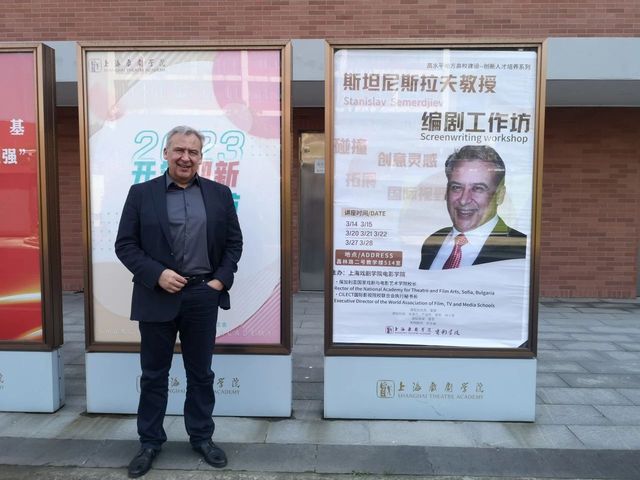
05
What will be your main focus in teaching at STA? Are there any specific teaching methods or course designs you would like to explore?
你在STA的教学重点是什么?是否有特别想尝试的教学方法或课程设计?
I plan to introduce more workshop-based learning, where students can actively create and revise stories together. I also aim to integrate cross-cultural case studies, to suggest a new grading system, a modular training schedule, and a number of specific exercises for the more subtle training of logic, senses, expression, memory, research, association, focus, analysis, synthesis, etc.
计划引入更多工作坊式实践教学,使学生能够在协作中实时创作与修改故事。同时将整合跨文化案例分析,建议采用新型评估体系、模块化培训计划,以及针对更细致的逻辑思维训练、感官训练、表达技巧、记忆强化、研究能力、联想创造、专注力、分析与综合能力的专项训练。例如:“感官剥夺写作”(蒙眼状态下通过听觉构建场景),“触觉叙事”(通过触摸未知物体激发故事灵感),“记忆重构”(将个人经历解构重组为虚构情节)等创新练习。
06
The film industry is undergoing rapid changes with AI technology and the rise of streaming platforms. How do you think these trends are shaping filmmaking? How should filmmakers adapt to these changes?
随着AI技术和流媒体平台崛起,电影产业正在经历剧变。你认为这些趋势如何影响电影制作?电影人应如何适应?
The rise of AI and streaming platforms is revolutionizing filmmaking, offering exciting new possibilities for storytelling and production. AI is no longer seen merely as a threat but as a tool that can be carefully managed to enhance the creative process. I believe filmmakers should embrace these innovations, while staying true to the core principles of storytelling. The challenge now is to use technology to enhance creativity, not replace it. Filmmakers must adapt by staying informed and continuously learning how to integrate these tools into their storytelling without losing the emotional depth that makes film truly impactful. Also, with streaming platforms becoming more prominent, there is a need for filmmakers to adapt to the shorter, faster-paced content that audiences now consume.
AI与流媒体的发展正在重塑电影制作,为叙事提供全新可能性。AI不应简单视为威胁,而是需要谨慎管理的创作工具。电影人应在坚持叙事核心原则的前提下拥抱技术创新。当前挑战在于利用技术增强而非取代创造力。适应过程需要持续学习如何将新技术融入叙事体系,同时保持作品的情感深度。流媒体平台的强势地位要求电影人掌握快节奏、短时长内容的叙事技巧,但必须警惕对情感共鸣本质的损害。
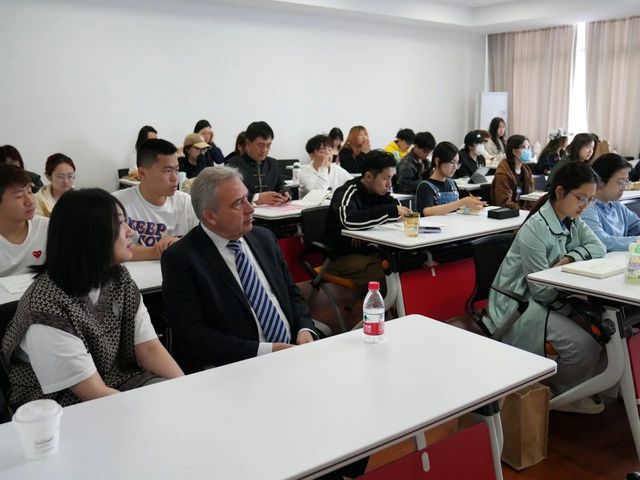
07
What are your thoughts on the current creative landscape in China? Have you noticed anything particularly interesting or worth exploring?
如何看待中国当前的创作生态?是否有观察到特别值得探索的现象?
What’s particularly intriguing to me is the way Chinese filmmakers blend traditional storytelling with modern-day questions and how they use symbols, colors, and sound to enhance the emotional experience of a film. There’s also a clear interest in exploring family dynamics and societal pressures in their stories – often with a strong focus on emotional restraint, something that distinguishes Chinese cinema from more overtly dramatic Western approaches. I’m particularly excited about the opportunity to help students navigate these cultural nuances and deepen their understanding of emotional storytelling with a global touch.
最引人注目的是中国创作者融合传统叙事手法与现代性追问的能力。他们运用象征符号、色彩语言与声音设计强化电影情感维度的方式独具特色。家庭关系与社会压力是常见主题,且通常采用情感克制处理——这种与西方戏剧化表达形成对比的“平静张力”,构成了中国电影的独特辨识度。我注意到学生对“面子文化”影响下的行为逻辑具有敏锐洞察力,例如用红包金额暗示人际关系亲疏的剧本设计,既体现文化特性又具备普世传播价值。
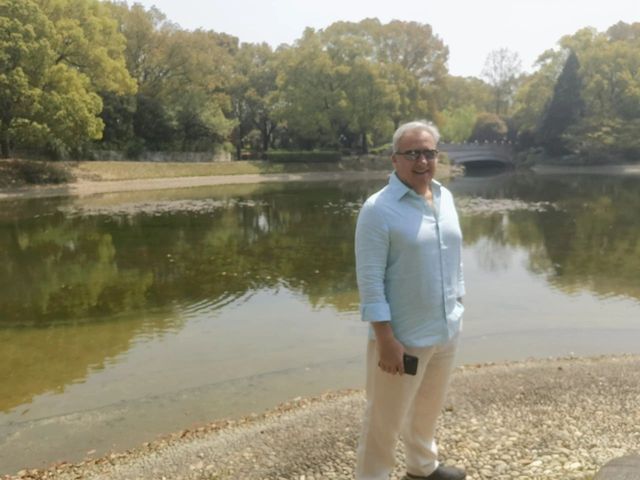
08
Besides teaching, do you have any plans to engage in other projects in China, such as academic research, cross-cultural collaborations, or new creative works?
除教学外,是否有在华开展学术研究、跨文化合作或创作项目的计划?
Yes, I believe that there’s tremendous potential for international collaboration and I am particularly excited about the possibility of developing a project which I believe STA would embrace as it deserves to have such an entity. I would tentatively call it for the moment The Shanghai International Screenwriting Artistic Lab (SISAL). I envision this as an innovative initiative aimed at fostering creative collaboration and cross-cultural exchange within the Chinese and international filmmaking communities. The lab would aim to bring together filmmakers who have already made their debut. It may provide a platform for up to 12 fiction, documentary, and animation film projects, with 3-4 tutors working closely with filmmakers on their individual scripts and projects. In addition, it could offer mentorship for up to 6 TV series projects, with 2-3 tutors focusing on the unique challenges of long-form storytelling. I believe that such an initiative would foster a dynamic exchange of ideas, allowing us to push the boundaries of narrative form, explore new media possibilities, and break new ground in global storytelling by merging Western and Eastern storytelling traditions in multinational film projects.
正积极筹备“上海国际剧本艺术实验室”(SISAL)。这个创新平台计划汇聚已有作品基础的电影人,每年支持12个电影/纪录片/动画项目(配备3-4名导师深度指导),以及6个电视剧项目(2-3名导师专注长叙事挑战)。该实验室将推动东西方叙事传统在跨国合作中的创造性融合,例如将昆曲《牡丹亭》重构为VR交互叙事,或开发结合苏州评弹韵律与电子音乐的实验电影。已有学生将弄堂故事转化为沉浸式剧本杀,该项目获得国际制片方的高度关注。
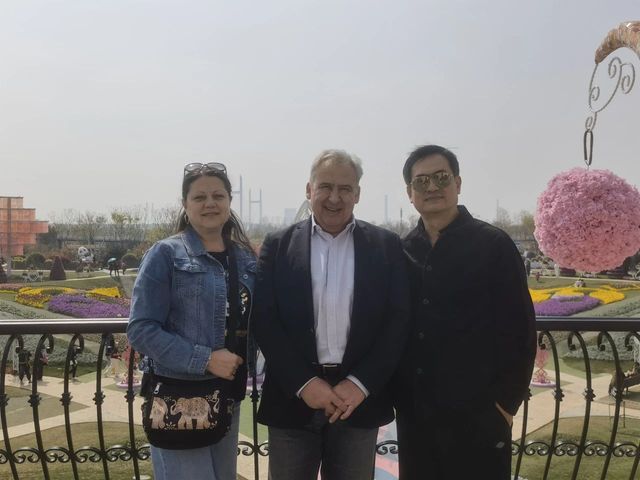
09
How are you adjusting to life in China? Is there anything you particularly enjoy or find surprising?
适应中国的生活感受如何?是否有特别享受或感到意外的事物?
I’m enjoying life here immensely. The energy in Shanghai is unlike anywhere I’ve experienced — there’s a constant sense of possibility in the air. What has surprised me most, perhaps, is how deeply people care about art — not just as entertainment, but as something essential to their identity. It’s truly a beautiful thing to be part of.
One of the most striking aspects of daily life here is the seamless integration of online living into every part of the urban experience — from ordering food and booking train tickets to navigating the city. The train system, in particular, stands out not just for its speed and efficiency, but also for how it connects people with a quiet sense of purpose.
The urban environment itself reflects this attentiveness: roads are clean, weekend parks are vibrant with multigenerational families, and flower gardens are meticulously cared for. There’s a pervasive sense of public responsibility, with shared spaces being respected and nurtured.
Equally moving are the many moments of gentle behavior in daily encounters. The owner of a small painting supply shop ran to find out from another shop or stage house the paper my wife was looking for. Staff at a restaurant we visited frequently treated us like long-time friends and kept bringing food we hadn’t ordered. In another small place, where the staff didn’t speak English, they patiently communicated through translation apps, determined to ensure we were well-fed and understood. At the hotel, a maid continuously thanked us for tidying up after ourselves — a gesture that felt both humble and sincere. We couldn’t help but be amazed at how deeply rooted acts of giving are — small presents exchanged as symbols of affection and care, whether between family members, friends, or even strangers.
These seemingly simple details — the way people treat each other, their environment, and their work — suggest something profound: a quiet cultural emphasis on care, respect, and dignity, and a deep sense of attentiveness through daily, thoughtful actions. I am learning something new every day, and it’s a great privilege to be part of such a dynamic environment.
我在这里的生活体验非常愉快。上海的城市能量独一无二——空气中始终涌动着无限可能的预感。最让我惊讶的或许是人们对艺术的重视程度:这不仅是一种娱乐方式,更是身份认同的核心要素。能成为这种文化生态的一部分,实在是美妙的体验。
日常生活中最显著的特色是数字化生活的无缝衔接:从点餐外卖、高铁购票到城市导航,线上服务渗透在每个生活细节中。轨道交通系统尤其令人赞叹,不仅因其速度与效率,更因它承载着某种静默而坚实的社会联结功能。
城市环境本身也体现着这种细致关怀:道路洁净度始终保持高水平,周末公园里随处可见三代同堂的温馨场景,高架桥两侧的花卉景观如同精心打理的艺术装置。公共空间展现出的集体责任感令人印象深刻——共享区域不仅被规范使用,更被用心维护。
日常交往中的温情时刻同样动人:美术用品店老板为寻找我妻子需要的特种纸张,特意跑到其他店铺询问;常去餐厅的服务员待我们如老友,总会额外赠送未点餐品;语言不通的小餐馆员工坚持用翻译软件沟通,确保我们理解每道菜品;酒店保洁员因我们自行整理房间而反复致谢,这份谦逊与真诚令人触动。最让我们惊叹的是馈赠文化的深入人心——亲友甚至陌生人之间互赠小礼物的习惯,已成为传递关爱的重要仪式。
这些看似平常的生活细节——人际互动方式、环境维护态度、职业操守体现——揭示出深刻的文化特质:通过日常实践传递的关怀意识、对尊重与尊严的珍视、以及渗透在行为细节中的集体责任感。每天我都能发现新的认知维度,能沉浸在这样的动态文化环境中实属荣幸。
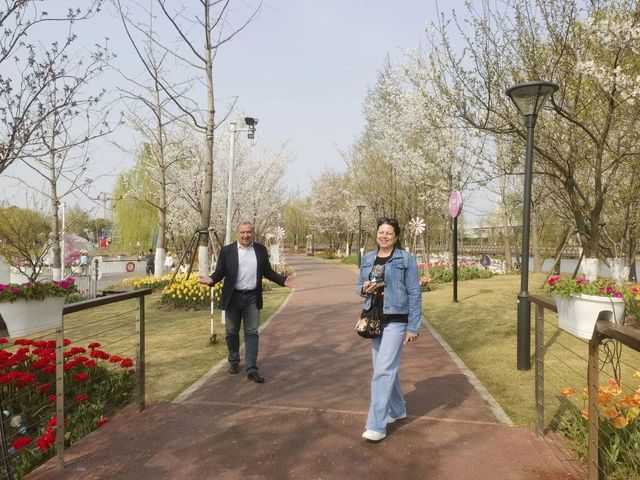
人物简介
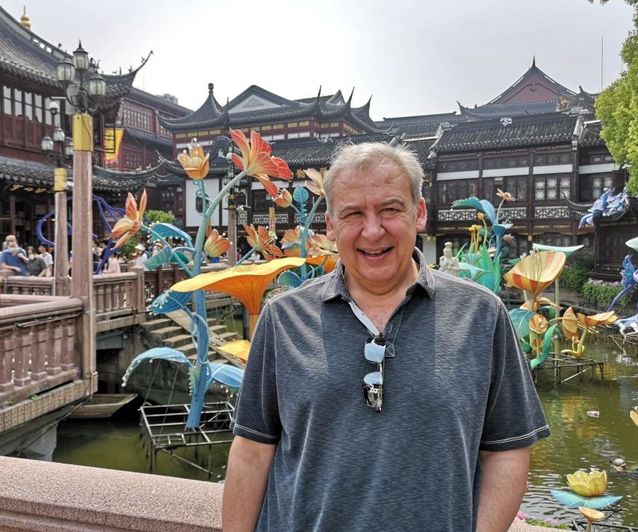
斯坦尼斯拉夫•塞默德捷夫(StanislavSemerdjiev),上海戏剧学院电影学院教授。他是世界电影、电视和媒体高等院校协会(CILECT)执行董事,保加利亚电影、电视和广播编剧协会(BAFTRS)创始人兼会长,联合国教科文组织非政府组织联络委员会成员。曾任保加利亚索非亚国家戏剧与电影艺术学院(NATFIZ)校长,也是CILECT学生电影奖和CILECT教学奖的创始人和组织者。教授以主席或成员身份参与了60多个国家的工作,包括电影节评审和选拔委员会,会议、研讨会和论坛的演讲和主持人等。他创作了保加利亚首个长篇电视连续剧《保加利亚酒店》(77集,2004年)。其混合电影《哈姆雷特探险》(2008年)和舞蹈表演《保加利亚的神秘》(2019年)获得广泛好评和多项奖项。
Stanislav Semerdjiev, a professor at the College of Film, Shanghai Theatre Academy, serves as the Executive Director of the World Association of Film, Television, and Media Higher Schools (CILECT). He is also the founder and president of the Bulgarian Association of Film, Television, and Radio Scriptwriters (BAFTRS) and a member of the UNESCO NGO Liaison Committee. He previously served as the Rector of the National Academy of Theatre and Film Arts (NATFIZ) in Sofia, Bulgaria. Additionally, he is the founder and organizer of the CILECT Prize for Student Films and the CILECT Teaching Award.
Professor Semerdjiev has participated in activities across more than 60 countries as a chair or member of various organizations, including film festival juries and selection committees, as well as conferences, workshops, and forums where he has served as a speaker and moderator. He is the creator of Bulgaria’s first long-running television series, Hotel Bulgaria (77 episodes, 2004). His hybrid film The Hamlet Adventure (2008) and dance performance Bulgarian Mystery (2019) have received widespread acclaim and won numerous awards.
审核:韩永胜
采访:21级广播电视编导 杨雨芃
图片由被访者提供




